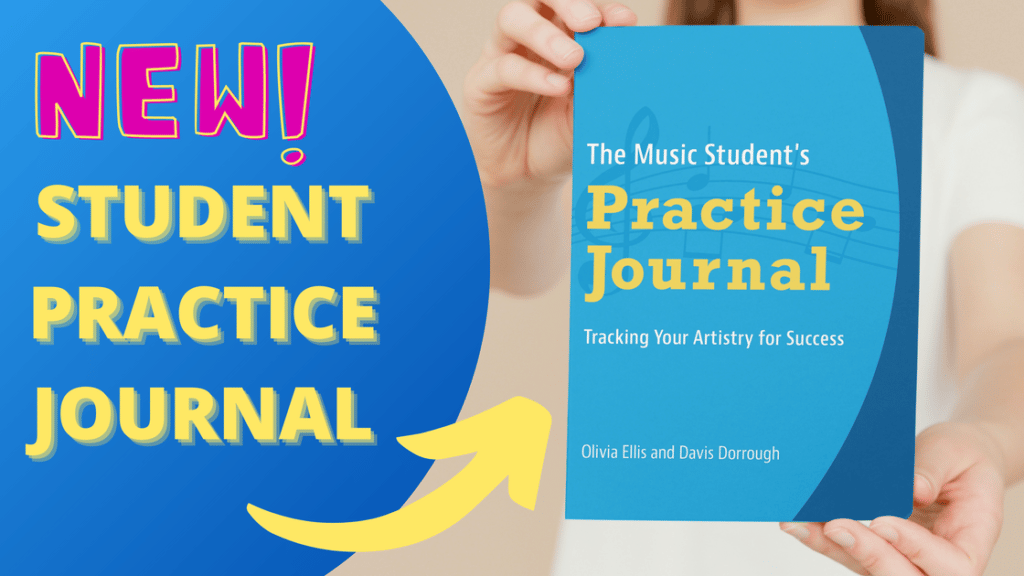“How much did you practice this week?” is a question that pops up frequently. But perhaps the better question would be “How did your practice go this week?” Practicing encompasses so much more than a quantity of time, and it is a major step towards practice independence when students are able to self-evaluate what went well or what needs improvement.
Over the years, I have tried different ways to help students track their practice progress. At first, it was simply a chart, but I quickly realized there were many more things I wanted to know about their weekly practice… like what they listened to, questions they had for me, and their own reflections on practice and performance. I began to print copies of practice sheets and stapled them in packs, revising each year based on feedback. Collaborating with Davis, we talked about the need to have a printed journal that would meet all of these needs and also provide space for goals and lesson assignments. We brainstormed ideas with our students in mind, and The Music Student’s Practice Journal: Tracking Your Artistry for Success was born!
More than just a book to notate how much students practice, this journal provides a place to reflect on how they practice and figure out what works best for them. In our journal, students begin by listing their music goals for the coming year. Then, the Achievement Plan encourages students to list three action steps to help them reach each of their goals. There is also a place to list memory goals along with upcoming deadlines to check off.
The main portion of this journal is a two-page spread to track lesson assignments and practice goals. The first page includes space for the date, technique goals, repertoire goals, and other reminders. The music theory section includes a place to assign pages or demonstrate theory concepts and includes two lines of staff. (The back of the book has more staff paper for longer assignments if needed.)

The second page includes a chart for tracking daily practice, which can be logged by writing specific practice times or just using checkmarks for an amount of time decided by the teacher. The middle of this page is our favorite part of the journal because it includes a special spot for students to reflect on their practice each week, what they’ve listened to, any struggles, accomplishments, and more. This is where students become engaged in the quality of their practice. The final section is a place to list questions to share with the teacher at the next lesson, building even more independent learning skills.
The Music Student’s Practice Journal: Tracking Your Artistry for Success is available for purchase at Amazon.

Dr. Olivia Ellis teaches piano, group piano, pedagogy, and chamber music at Messiah University in Mechanicsburg, Pennsylvania. She’s an editor for Piano Magazine and has published several books including the Easy Piano Lead Sheets and Chord Charts series. She’s constantly creating new activities and games to teach concepts, and loves helping other teachers find their niche.



